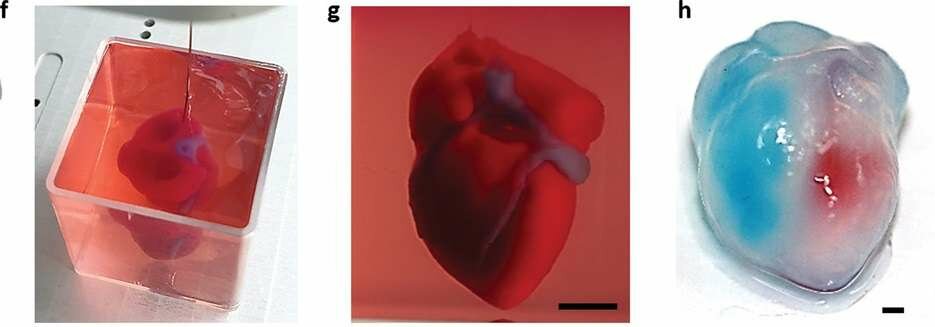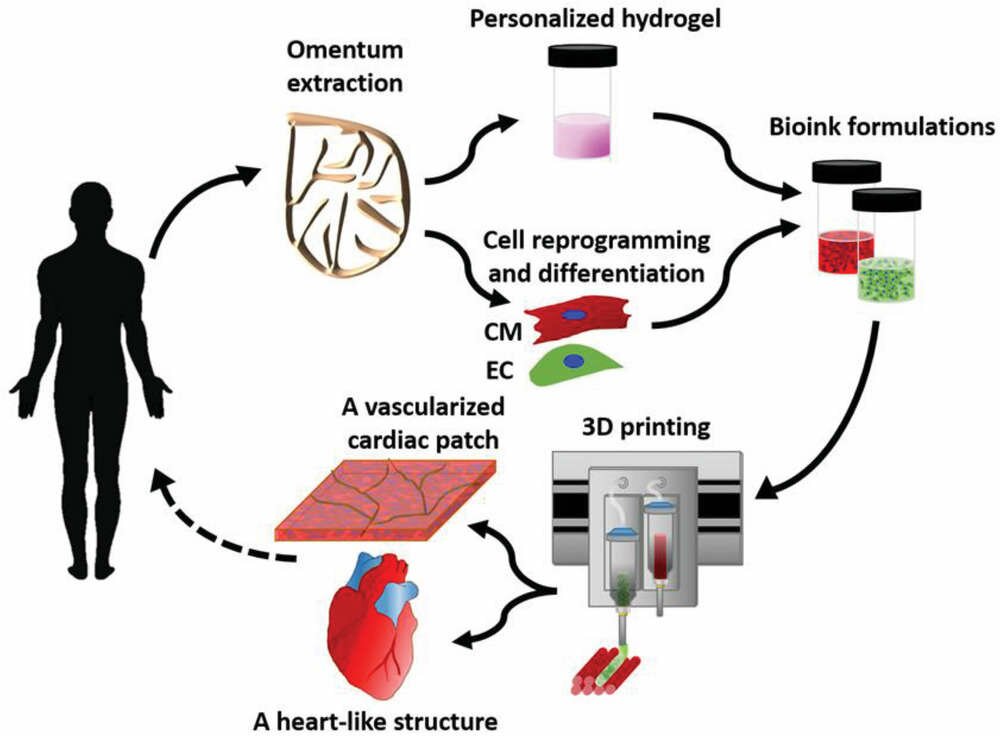Scientists Create World's First 3D-Printed Heart Using Patient's Own Cells
Researchers around the world have been racing to develop the most functional artificial human heart possible, and a team from Tel Aviv University has recently announced a major breakthrough. The team used cells and biological material from the patient to create an exact match using a 3D printer.
The team says that the new heart will “completely match the immunological, cellular, biochemical, and anatomical properties of the patient.”
Lead researcher Tal Dvir explained in a statement that this is a world first because while hearts have been made with 3D printers before, they have not used the patient’s own cells.
“This is the first time anyone anywhere has successfully engineered and printed an entire heart replete with cells, blood vessels, ventricles and chambers. This heart is made from human cells and patient-specific biological materials. In our process these materials serve as the bioinks, substances made of sugars and proteins that can be used for 3D printing of complex tissue models. People have managed to 3D-print the structure of a heart in the past, but not with cells or with blood vessels. Our results demonstrate the potential of our approach for engineering personalized tissue and organ replacement in the future,” Dvir says.

F, G) A printed heart within a support bath. H) After extraction, the left and right ventricles were injected with red and blue dyes, respectively, in order to demonstrate hollow chambers and the septum in‐between them. / Photo Credit: Advanced Science
Dvir explained that the prototype heart that they worked with in the experiment is much smaller than it actually needs to be. The researchers began with a heart the size of rabbit, since the same technology is needed, the team will now just need to learn how to scale up the process.
“At this stage, our 3D heart is small, the size of a rabbit’s heart, but larger human hearts require the same technology,” Dvir said.
The professor said that it could take up to ten years to get this technology into hospitals for human use.
“We need to develop the printed heart further. The cells need to form a pumping ability; they can currently contract, but we need them to work together. Our hope is that we will succeed and prove our method’s efficacy and usefulness. Maybe, in ten years, there will be organ printers in the finest hospitals around the world, and these procedures will be conducted routinely,” Dvir said.
Dvir explained further on exactly how they developed this new process.
“The biocompatibility of engineered materials is crucial to eliminating the risk of implant rejection, which jeopardizes the success of such treatments. Ideally, the biomaterial should possess the same biochemical, mechanical and topographical properties of the patient’s own tissues. Here, we can report a simple approach to 3D-printed thick, vascularized and perfusable cardiac tissues that completely match the immunological, cellular, biochemical and anatomical properties of the patient,” Dvir explained.

A visual representation of the of the experiment / Photo Credit: Advanced Science
Over the past several years, different teams of researchers from all over the world have been working to develop a working human heart using biological material such as stem cells. The first breakthrough came in 2016, when a team of researchers from Massachusetts General Hospital and Harvard Medical School were able to regenerate human heart tissue using stem cells.
The researchers published a study that year in the journal Circulation Research, showing how they used adult skin cells to regenerate functional human heart tissue.
Shortly after, numerous different studies were published showing how researchers were able to replicate and improve upon these findings. In November of 2017, researchers at Duke University created human heart muscle in the laboratory, and successfully grew it large enough to provide a patch that contracts and transmits electrical signals.
Then, in April of last year, researchers at Columbia Engineering was able to replicate heart tissue that actually behaved like real human tissue, a feat that previous studies were not able to accomplish.
Heart disease is the leading cause of death in the United States and many other parts of the world, and heart transplant surgery is currently the only treatment available to patients with end stage heart failure. This situation has caused a massive shortage of organ donors, which is why this technology is so important.